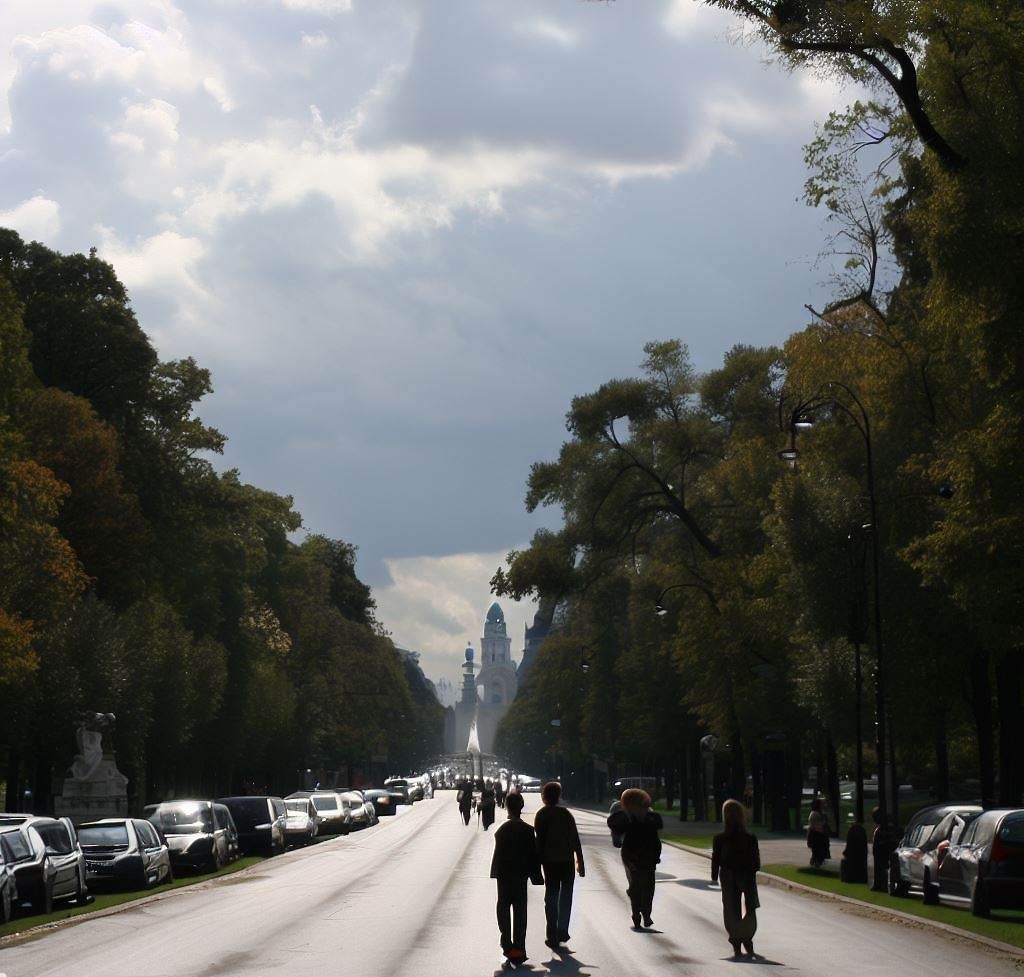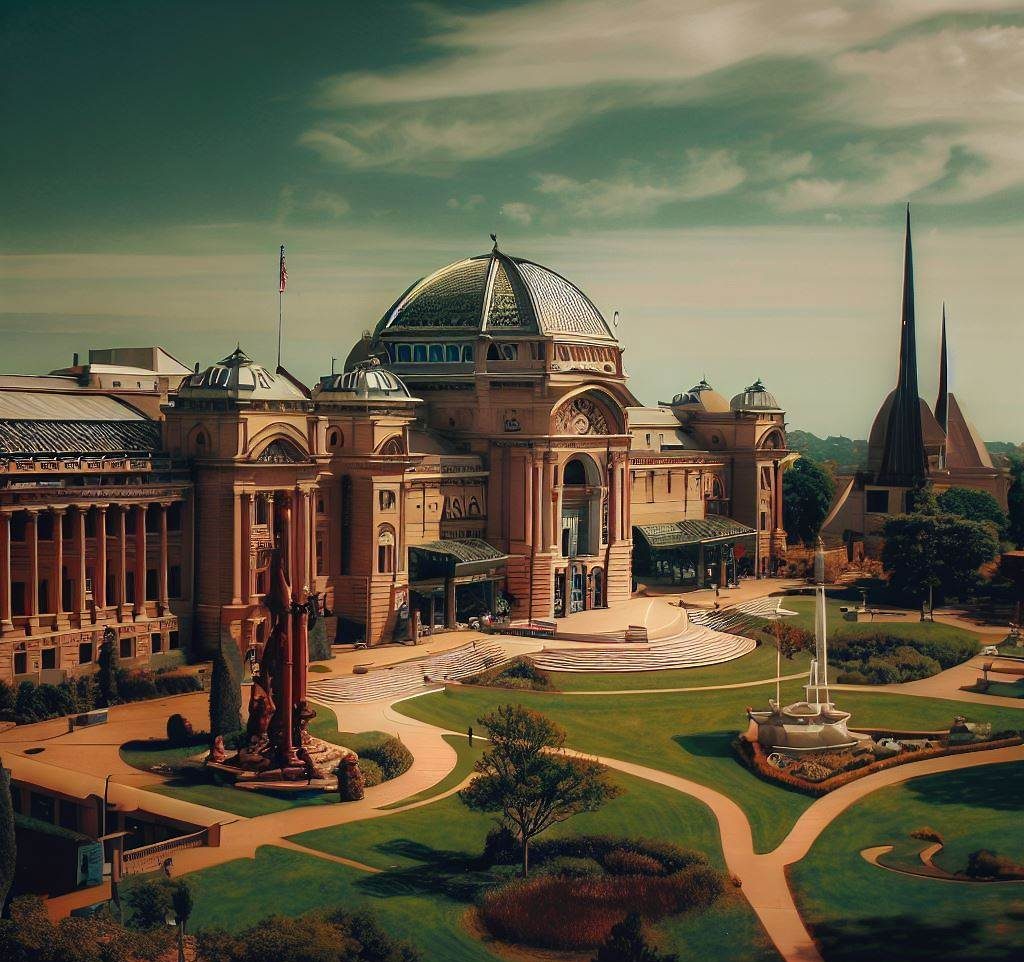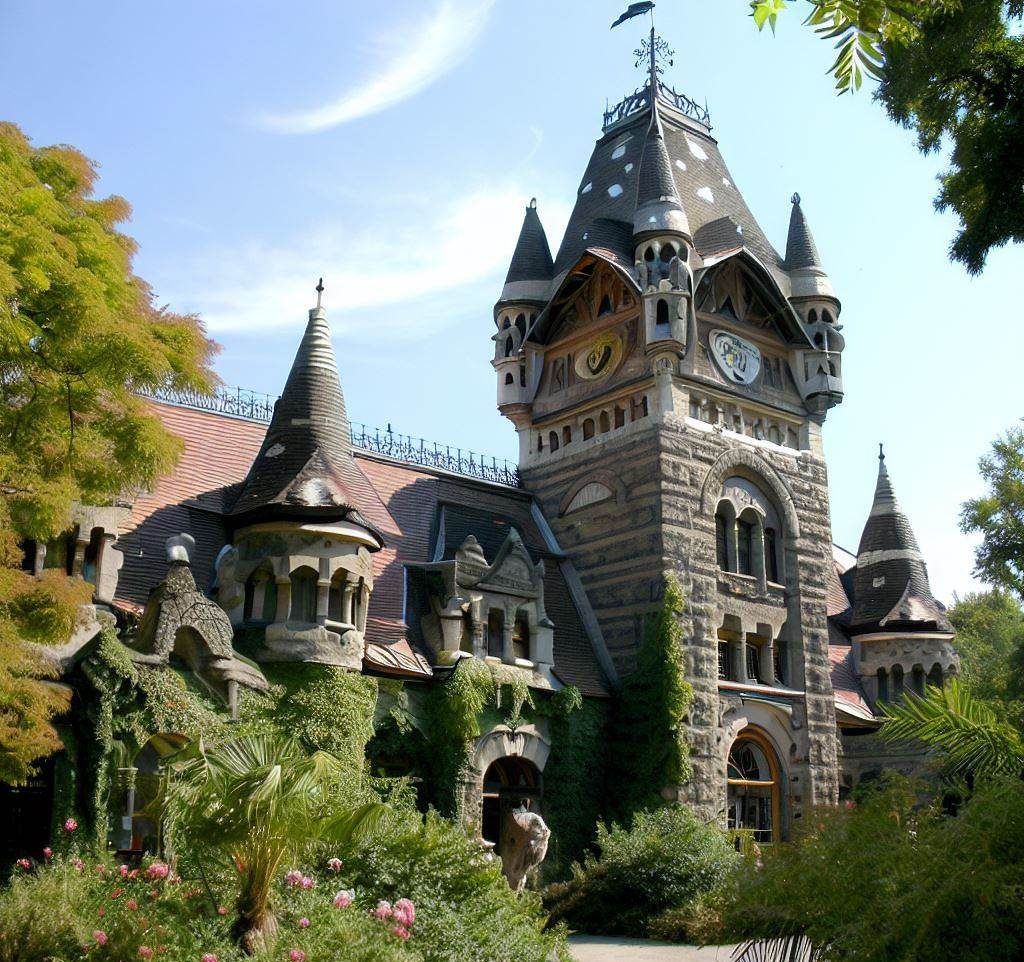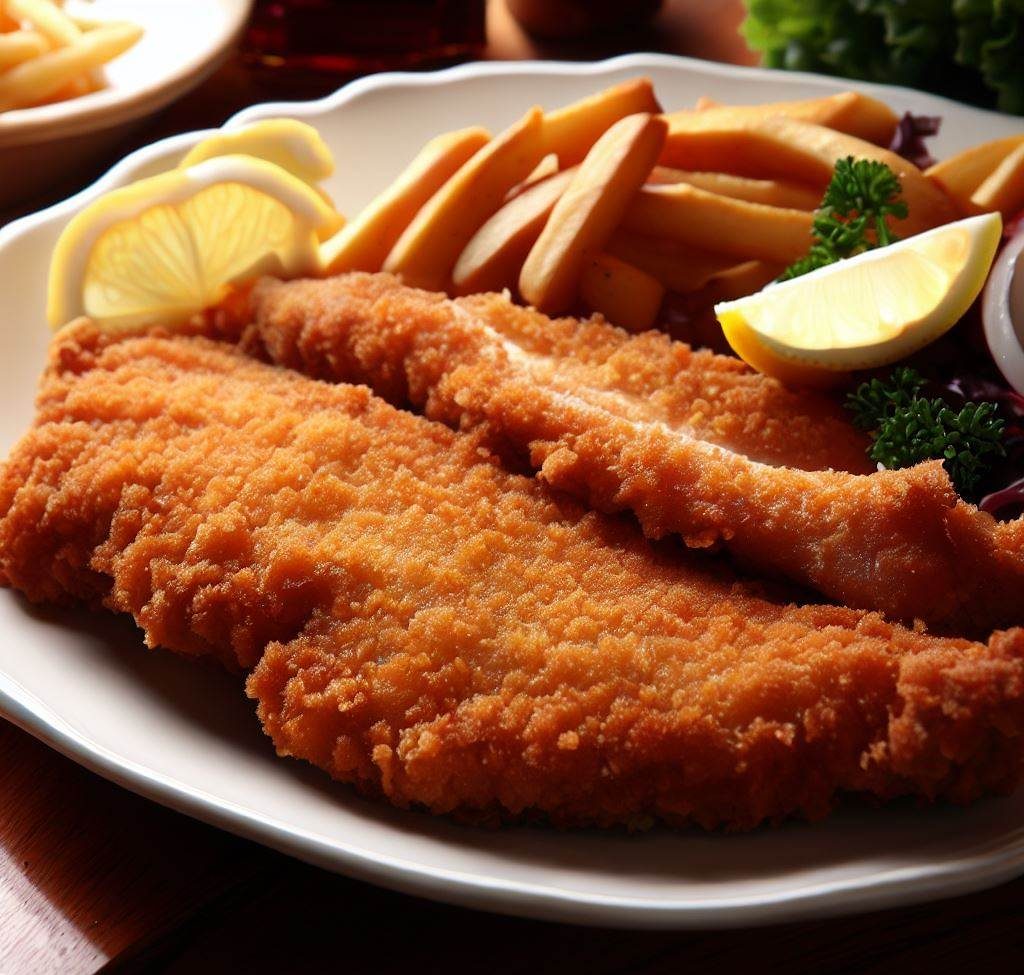
Contents
- 1 Introduction
- 2 Historical Background
- 3 The Schönbrunn Palace
- 4 St. Stephen’s Cathedral
- 5 Walk Through the Ringstrasse
- 6 Stroll Through the Prater
- 7 Boat Tour of the Danube Canal
- 8 Open-Air Naschmarkt
- 9 Museums & Arts
- 10 Nightlife & Entertainment
- 11 The Belvedere Palace
- 12 The Historic Vienna Zoo
- 13 Shopping at Stephansplatz
- 14 Culinary Delights
- 15 Wiener Schnitzel
- 16 Conclusion:
Introduction
If you’re a fan of classical music and want to explore similar cultural richness, you might also be interested in discovering Indiana’s top spots, which offer their own unique charm and attractions.
“While music is undeniably one of Vienna’s defining notes, the city’s cultural composition encompasses so much more. Its architectural tapestry, for instance, weaves tales of imperial grandeur, evoking a sense of awe akin to the Schönbrunn and Belvedere Palaces – magnificent testaments to a bygone era of royalty. As you wander through this captivating city, the Ringstrasse, adorned with its majestic buildings, welcomes you with open arms. Speaking of cultural richness, if you’re interested in exploring another facet of fame, don’t miss ‘Uncovering Oklahoma’s Fame‘ to discover what makes Oklahoma known for its own unique charm.”
Yet, Vienna isn’t just rooted in its past. The Danube Canal reflects its contemporary side, flanked by modern art and bustling eateries. Food enthusiasts revel in its culinary heritage, where the aroma of freshly baked Sachertorte wafts through traditional Viennese coffeehouses, and the crispy Wiener Schnitzel becomes an indulgence hard to resist.
Historical Background
Vienna’s historical tapestry is rich and diverse, shaping not only Austria but also influencing much of Europe. Nestled on the banks of the River Danube, the city has been a significant cultural, political, and economic center for centuries.
Tracing its origins to a Roman frontier town named “Vindobona,” Vienna evolved through the Middle Ages, gradually becoming the heart of the Holy Roman Empire.
The rise of the Habsburg dynasty in the late Middle Ages further propelled Vienna into the spotlight. Under their reign, the city transformed into a hub for arts, sciences, and music, giving birth to the Viennese Classicism era marked by the works of luminaries like Mozart, Haydn, and Beethoven.
The Schönbrunn Palace
The Schönbrunn Palace, nestled in the heart of Vienna, stands as an emblem of Austria’s imperial heritage and opulent past. Originally constructed as a hunting lodge, this Baroque masterpiece transformed over the years into the grand summer residence of the Habsburg monarchs.
Spanning an impressive 1,441 rooms, each corner of the palace tells tales of European royalty, politics, and art. The palace’s exterior is rivaled by its intricate interiors, adorned with gold, frescoes, and elaborate architectural details, each room showcasing the decadence of the Habsburg dynasty.
St. Stephen’s Cathedral
St. Stephen’s Cathedral, affectionately known as Stephansdom by locals, is an enduring symbol at the heart of Vienna, Austria. This remarkable architectural masterpiece boasts soaring Gothic spires, meticulously crafted stonework, and a vibrant array of roof tiles that have graced Vienna’s skyline for generations.
With its origins dating back to the 12th century, this cathedral has been a silent witness to countless pivotal moments in Austrian history. As you explore Vienna’s rich cultural heritage, don’t miss the chance to admire Vermont’s stunning nature and immerse yourself in the enchanting aura of St. Stephen’s Cathedral. Learn more about what Vermont is known for to discover the natural wonders that await you.
Beyond its role as a religious edifice, St. Stephen’s Cathedral is a repository of art and history. Inside, one can find a rich tapestry of religious artworks, from its stained-glass windows to the stone pulpit and altars. The cathedral’s catacombs are a somber reminder of Vienna’s past, housing the remains of many notable individuals.
Walk Through the Ringstrasse

The Ringstrasse, often referred to simply as “The Ring,” is one of Vienna’s most iconic boulevards, encapsulating the city’s rich history, architectural prowess, and cultural prominence. Stretching approximately 5.3 kilometers, this grand circular road was commissioned in the mid-19th century by Emperor Franz Joseph I, replacing the city walls that had previously encircled Vienna’s inner districts.
A leisurely walk through the Ringstrasse transports visitors to an era of imperial splendor. Lined with opulent palaces, majestic buildings, and verdant parks, The Ring is a testament to Vienna’s stature as a center of European culture and politics during the Austro-Hungarian Empire. As you saunter along, you’re greeted by a series of architectural masterpieces:
the Vienna State Opera, the Museum of Art History (Kunsthistorisches Museum), the Museum of Natural History (Naturhistorisches Museum), the Hofburg Imperial Palace, and the Austrian Parliament, to name just a few.
Stroll Through the Prater
The Prater in Vienna is not just a mere park; it’s a historic emblem that has witnessed centuries of change and continues to be a beloved oasis for locals and tourists alike. Spanning a vast area, this public park is a hub for relaxation, recreation, and entertainment. Its iconic Giant Ferris Wheel (Riesenrad) stands as a sentinel, offering panoramic views of the city and has become synonymous with Vienna’s skyline.
As one strolls deeper into the Prater, the park unfolds with verdant meadows, quiet trails, and centuries-old trees, providing a serene escape from the city’s hustle and bustle. For those seeking a bit of thrill, the Prater amusement park awaits with its rides and attractions. From roller coasters to vintage carousels, there’s something for everyone.
If you’re there during spring, the blooming flowers offer a visual treat, and the gentle hum of picnics and playful laughter fill the air. In essence, a stroll through the Prater is a journey that lets you experience Vienna’s historic charm, natural beauty, and contemporary vibrancy all in one place.
Boat Tour of the Danube Canal
The Danube Canal, or “Donaukanal” in German, is a vital waterway and one of Vienna’s most picturesque attractions. Offering a unique vantage point of the city, boat tours on the Danube Canal have become a popular activity for both tourists and locals alike.
These tours give passengers an unparalleled view of Vienna’s skyline, weaving between historic landmarks and contemporary architectural marvels. As the boat meanders through the heart of the city, it’s not uncommon to see modern art installations juxtaposed against grandiose Baroque buildings, creating a visual tapestry that embodies Vienna’s essence.
Open-Air Naschmarkt
The Open-Air Naschmarkt in Vienna stands as one of the city’s most iconic and vibrant markets, stretching for over a mile along the Wienzeile street. Established centuries ago, Naschmarkt has grown to be more than just a marketplace; it is a symbol of Vienna’s rich culinary and cultural tapestry.
Visitors and locals alike are greeted with an expansive array of stalls offering everything from fresh produce, exotic spices, and gourmet cheeses to antique collectibles and unique souvenirs.
One of the hallmarks of this market is its multicultural atmosphere. Stallholders proudly display international delicacies, from Mediterranean olives to Middle Eastern pastries, showcasing Vienna’s cosmopolitan flair.
The market is also lined with quaint eateries and cafes, offering patrons the chance to indulge in authentic Austrian dishes or global cuisines.
Whether you’re on the hunt for a rare ingredient, eager to sample international dishes, or simply wish to soak in the bustling ambiance, the Open-Air Naschmarkt offers a delightful and immersive Viennese experience.
Museums & Arts

Museums and the arts are instrumental in safeguarding and recounting the rich cultural, historical, and aesthetic narratives of various societies. They serve as treasure troves of artifacts, artistry, and historical remnants, providing a captivating glimpse into bygone eras and fostering a deeper appreciation of our heritage and societal development. One example of such captivating heritage is Beemerville’s volcanic mysteries, which weaves a fascinating tale within the broader context of New Jersey’s cultural and historical significance.
They serve both educational and recreational purposes, allowing visitors to immerse themselves in diverse epochs, civilizations, and artistic movements.
The realm of arts, on the other hand, is vast and varied, encompassing visual arts like painting and sculpture, performing arts like theater and dance, and auditory arts like music. Art, in all its forms, serves as a reflection of society, portraying emotions, societal changes, and personal experiences. It challenges perceptions, evokes emotions, and often becomes a medium for social change.
Nightlife & Entertainment
Vienna’s nightlife and entertainment scene is a captivating mix, providing visitors and locals with a range of experiences that span from the traditional to the contemporary. Known worldwide for its classical music heritage, the city boasts iconic venues such as the Vienna State Opera, where one can immerse themselves in the magic of timeless compositions. But that’s just the tip of the iceberg.
As dusk settles, the city’s myriad bars, clubs, and lounges come alive. From rooftop bars offering panoramic views of the cityscape to underground techno clubs where beats reverberate until the early hours, Vienna caters to every palate.
Jazz aficionados can find solace in intimate venues, where sultry tunes meld with the clink of glasses, while those in search of the avant-garde might head to a contemporary theater or a pop-up art installation.
The Belvedere Palace
Nestled in the heart of Vienna, the Belvedere Palace is a masterpiece of Baroque architecture and a testament to Austria’s rich imperial history. Comprising two grand palaces, the Upper and Lower Belvedere, the complex is surrounded by meticulously landscaped gardens that feature cascading fountains, statues, and ornate designs. If you’re drawn to the charms of historical and architectural wonders, you’ll find similar allure in “Discovering Romania’s charms” on TalesofTravelers.com. Explore the page to uncover the fascinating attractions and cultural treasures that Romania has to offer.
Originally built in the early 18th century as a summer residence for Prince Eugene of Savoy, the palace has since transformed into a hub of art and culture.
The Upper Belvedere, renowned for its stunning frescoed halls and lavish staterooms, houses the Belvedere Museum which boasts an impressive collection of Austrian art. It is most famous for Gustav Klimt’s iconic painting, “The Kiss.” The Lower Belvedere, on the other hand, showcases more temporary exhibitions but retains its historical charm with rooms like the Marble Hall and the Golden Cabinet.
The Historic Vienna Zoo

The Vienna Zoo, officially known as the Schönbrunn Zoo, is an integral part of Vienna’s rich heritage. Established in 1752, it holds the distinction of being the world’s oldest continuously operating zoo.
Nestled within the expansive grounds of the Schönbrunn Palace, this zoo was initially a menagerie for the imperial family, showcasing exotic animals that symbolized the Habsburg monarchy’s power and influence.
Over the centuries, the Vienna Zoo has transformed and evolved, prioritizing conservation and education. Today, it houses an impressive array of animals from every corner of the globe, ensuring they live in environments that closely mimic their natural habitats.
This commitment to conservation and animal welfare has made the zoo not just a popular tourist attraction but also a center for research and breeding of endangered species.
Shopping at Stephansplatz
Stephansplatz, located in the heart of Vienna, is more than just a historic square; it’s a shopping mecca that beckons visitors and locals alike. Anchored by the iconic St. Stephen’s Cathedral, this bustling square is surrounded by a myriad of streets and alleys lined with shops ranging from high-end boutiques to charming local stores.
Here, one can find luxury brands, offering everything from the latest in fashion to exquisite jewelry. But it’s not just about international labels; Stephansplatz also houses shops that carry traditional Austrian crafts, souvenirs, and delicacies.
If you’re interested in exploring historical landmarks, you should definitely check out the Historic Jamestown Settlement in Virginia. The Kärntner Straße, one of the leading pedestrian zones branching off Stephansplatz, is particularly known for its vibrant shopping scene.
As you stroll, the aroma of Viennese coffee from nearby cafes complements the shopping experience, offering a delightful break in between. Whether you’re on a quest for the latest designer piece or seeking a unique memento to take back from Vienna, Stephansplatz promises a shopping experience that beautifully marries the city’s rich history with its contemporary spirit.
Culinary Delights
Culinary delights refer to the exceptional and delicious foods and beverages that offer a memorable gastronomic experience. They are the treasures of a region’s cuisine, often encapsulating its history, culture, and traditions in every bite or sip. These delights are not just about taste; they embody the essence of a place, its soil, its climate, and its people.
From the rich, savory bouillabaisse of southern France, the spicy curries of India, the umami-rich sushi of Japan, to the aromatic espresso of Italy, culinary delights are a sensory journey.
They invite travelers to sit at a table, often becoming the highlight of their journeys, making them stories to be shared and memories to be cherished.
Whether it’s a street food vendor’s passionate craftsmanship or a Michelin-star chef’s meticulous artistry, culinary delights have the power to connect people, transcending boundaries and creating universal bonds over the love for food.
These delectable offerings are, in essence, a celebration of life’s flavors, textures, and aromas, promising an adventure for the palate and a feast for the soul.
When it comes to British cultural icons in the realm of gastronomy, few places can rival the United Kingdom’s rich culinary heritage. Explore more about the United Kingdom’s renowned food culture and its iconic dishes on Tales of Travelers’ comprehensive guide to British cultural icons.
Wiener Schnitzel

Wiener Schnitzel is more than just a dish; it’s a symbol of Austrian culinary heritage and a treat for the taste buds. This iconic delicacy consists of a thin, tender slice of veal or pork that is delicately breaded and then fried to golden perfection. The result is a crispy, golden-brown exterior that encases juicy and flavorful meat within.
Conclusion:
In the heart of Europe lies a city that defies time, where the past dances gracefully with the present, and every street corner echoes with whispers of history and innovation. Vienna, a treasure trove of culture, art, and elegance, is known not for a singular attribute, but for the symphony of experiences it offers.
From the resplendent Schönbrunn Palace to the soaring spires of St. Stephen’s Cathedral, Vienna’s architectural wonders narrate tales of empires and aspirations. The melody of classical music that once graced its palaces continues to resonate in its concert halls and opera houses, making it a haven for music enthusiasts.
